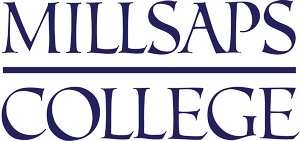This summer, with the support of the Kinnaird Endowment, the Millsaps College Department of Mathematics launched the inaugural Kinnaird Institute Research Experience with Dr. Alex Rice, assistant professor of mathematics. The cohort included Anne Marie Loftin, Olivia Edwards, Solomon Mcharo, Bineyam Tsegaye, Vajresh Balaji, and Lo Phillips, all of whom are majoring in either math or applied math at Millsaps. Each student participated in a competitive application process during the Fall 2018 semester for a spot in the program, and were awarded a $1,500 stipend for their work.
“I applied for the math research experience because I wanted to know what doing math research was like, having developed an interest from the series of talks Dr. Rice gave titled ‘Math Isn’t Done,'” Mcharo said. “It turned out to be a great experience that involved ups and downs, and that emphasized the need of mental endurance and vitality when carrying out work. Doing this experience has definitely improved my problem solving and analytical skills and I am very happy I was able to have such an experience.”
Over the month of June, the cohort met and worked each morning with Rice, then dove further into their research as a group in the afternoons. Their primary aim was to investigate generalizations and special cases related to a famous problem posed in the 1940s by Paul Erdős, who was one of the most famous and prolific mathematicians of the 20th century. In a 1946 paper, Erdős asked, “Given a positive integer n, what is the minimum number of distinct distances determined by n points in a plane?” For example, if n=3, then the answer is 1, because the points could be the corners of an equilateral triangle, and every pair of points is separated by the same distance. However, if there are 4 points, this is impossible, and the minimum number of distances is 2. It gets more complicated from there, and people have been hard at work on this question, known as the Erdős Distance Problem, and related questions, for over 70 years.
Their projects focused on the special case where the points are arranged in some type of lattice, which is believed to be optimal, and it was here that the group found mistakes in previous research and pressed on to find their own conclusions. In addition, they looked into the generalization of the question when one changes the definition of “distance,” focusing specifically on “taxicab distance.”
“Imagine you were in New York, and you were trying to get to a friend who was 3 blocks east and for 4 blocks north,” explained Rice. “If we think of you and your friend as just points in a plane, and ask how far apart you are, we would use the Pythagorean theorem and get that you are 5 blocks apart. This is what you might think of as the distance ‘as the crow flies.’ However, that’s not very helpful in a crowded city when you can’t walk through the buildings. For all practical purposes, to get to your friends, you have to walk 7 blocks not 5, so the ‘taxicab distance’ between you and your friend is 7 blocks. With a new definition of distance, we get a new version of Erdős’s question, and it has different answers. For example, it is possible to have four points that are all the same taxicab distance apart, whereas it is not possible with regular straight line distance! We were able to establish very strong, general results about the Erdős distance problem with the taxicab distance, which had not been previously explored in anywhere near the level of detail that we did.”
The work consisted of a combination of reviewing previous work, constructing examples, working through tireless case analyses, developing and formalizing rigorous proofs, and coding computers to run computations and generate illuminating data and visualizations. The students’ efforts resulted in two working papers, both of which contain compelling original theorems and other results worthy of publication in strong peer-reviewed journals, and one of which corrects errors in a well-known, frequently cited paper from the mid-1990s.
Rice and all six students plan to coauthor both papers, and will complete and submit the drafts for publication during the Fall 2019 semester. Additionally, each student will give presentations related to their contributions at the Millsaps Beta Beta Beta Honor Society research symposium in Spring 2020, and some of the students may present their work at regional or national conferences.
Rice was thrilled with the Kinnaird Institute Research Experience’s inaugural efforts.
“I can resoundingly say that the output from the program firmly exceeded my expectations,” he said. “The students worked hard, and worked together, to establish previously unknown fundamental facts of the universe. That’s always the goal of mathematical research, but it is a high bar to hit, particularly at the undergraduate level.”
